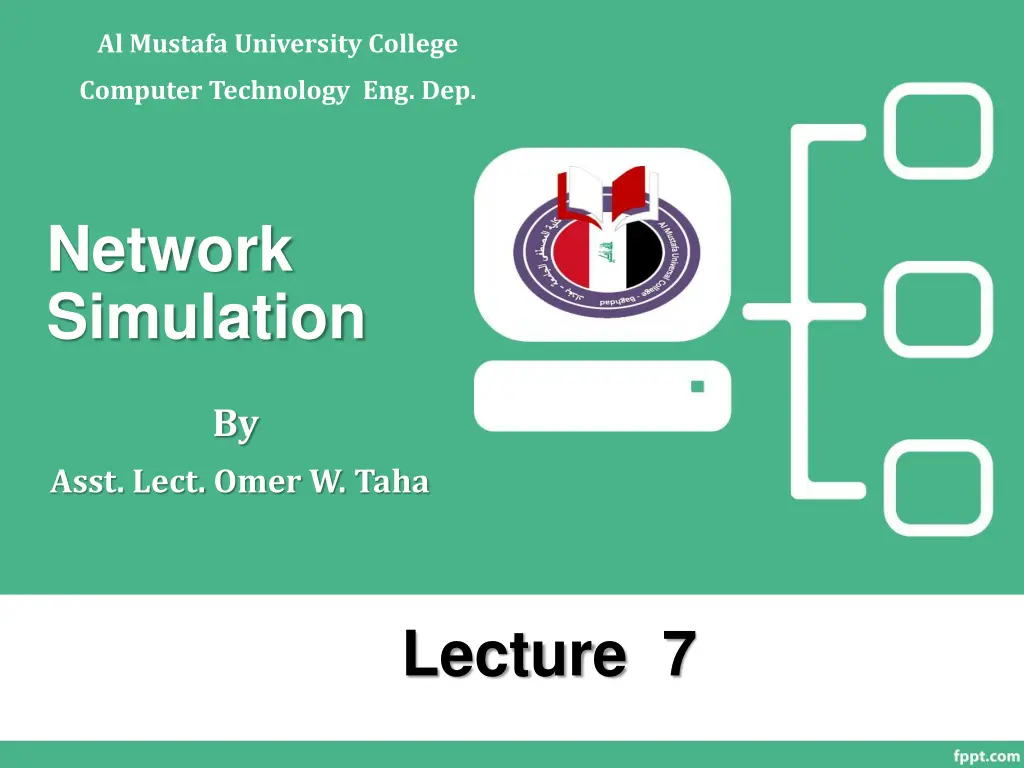
Network Simulation and Subnet Masking in Computer Technology
Explore the concepts of subnet masking, IP addressing, CIDR, and network communication in computer technology. Learn how to determine subnet masks, calculate broadcast addresses, identify valid hosts, and understand the processes involved in host-to-host communication at Layer 3. Dive into the fundamentals of routing and network communication within and across subnetworks.
Download Presentation

Please find below an Image/Link to download the presentation.
The content on the website is provided AS IS for your information and personal use only. It may not be sold, licensed, or shared on other websites without obtaining consent from the author. If you encounter any issues during the download, it is possible that the publisher has removed the file from their server.
You are allowed to download the files provided on this website for personal or commercial use, subject to the condition that they are used lawfully. All files are the property of their respective owners.
The content on the website is provided AS IS for your information and personal use only. It may not be sold, licensed, or shared on other websites without obtaining consent from the author.
E N D
Presentation Transcript
Al Mustafa University College Computer Technology Eng. Dep. Network Simulation By Asst. Lect. Omer W. Taha Lecture 7
SubnetMask Determines which part of an IP address is the network field and whichpart is the hostfield Follow these steps to determine the subnetmask: 1. Express the sub network IP address in binaryform. 2. Replace the network and subnet portion of the address with all1s. 3. Replace the host portion of the address with all0s. 4. Convert the binary expression back to dotted-decimalnotation. 60
SubnetMask Subnet mask in decimal = 255.255.240.0 61
IP addressing:CIDR CIDR: Classless InterDomain Routing subnet portion of address of arbitrary length address format: a.b.c.d/x, where x is # of bits in subnet portion of address (1s) only We will explain this in detail in Chapter2 subnet part 11001000 00010111 00010000 00000000 host part 200.23.16.0/23 NetworkLayer 4-62
Subnet questions Answer Five Simple Questions:
Q. Whats The Broadcast Address For Each Subnet? The broadcast address is all host bits turned on, which is the number immediately preceding the nextsubnet.
Q. What Are The Valid Hosts? Valid hosts are the number between the subnets, omitting all 0s and all 1s.
COMMUNICATION FROM HOST TO HOST Layer 3, provides services to exchange the individual pieces of data over the network between identified end devices. To accomplish this end-to-end transport, Layer 3 uses four basic processes: 1 Addressing 2 Encapsulation 3 Routing 4 D-ecapsulation
ROUTING Within a network or a sub network, hosts communicate with each other without the need for any Network layer intermediary device. When a host needs to communicate with another network, an intermediary device, or router, acts as a gateway to the other network.
GATEWAY THE WAY OUT OF OUR NETWORK The gateway, also known as the default gateway, is needed to send a packet out of the local network. If the network portion of the destination address of the packet is different from the network of the originating host, the packet has to be routed outside the original network
